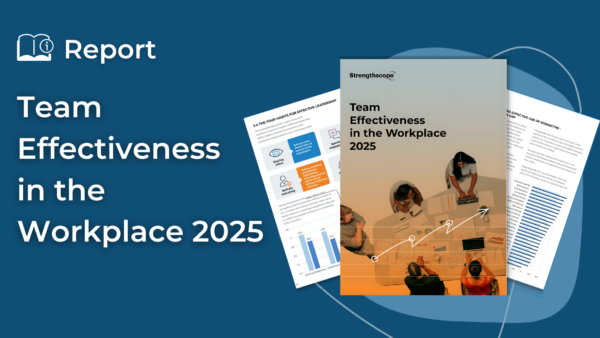Like 500 pound silverback gorillas, alpha male (or female) bosses who demonstrate intolerance of any challenge to their power and dominance, are probably the most challenging type of people to deal with and influence. Any attempt to challenge them head on is likely to end up unhappily for the challenger, as this plays to the boss’ autocratic, ‘bully-boy’ tendencies.
This article considers effective and politically astute ways in which direct reports can go about influencing this type of boss constructively, without risking their job, or even worse, their emotional and psychological wellbeing.
Alpha male bosses are still frequently found in organisations and whether they are aware or unaware of their style and behaviour, their pattern of behaviour and the inevitable outcomes are almost always the same. The way they manage and deal with others leaves people feeling intimidated, demoralised and devalued. Over the course of time, individuals working for this type of boss end up feeling helpless to improve their situation and remove themselves from the source of the distress and unhappiness, a psychological state psychologists call “learned helplessness”. This typically ‘feeds’ the alpha males dictatorial and aggressive style as (s)he has learned to dominate others and get things done through threats, intimidation and control. Like in a gorilla clan, any challenge, either direct or indirect, is regarded as an unacceptable threat and the alpha male boss typically deals with the challenge decisively and savagely.
So how can you influence a boss who acts like a Silverback Gorilla. Although the relationship is likely to be energy-sapping, disempowering and hard-going at times, here are several strategies to help you survive, get things done and even develop positively through the experience:
Choosing whether you want to work for this type of person
Remember that working with any boss is a choice you need to make after conscious consideration of the merits and demerits. You are not simply a victim of circumstance and can choose to change your situation even if this looks difficult or impossible initially. In order to make an informed choice about whether to continue to work for a Silverback-type boss, consider the following:
- To what extent is the person’s style and behaviour undermining your self-confidence and emotional wellbeing?
- Does the person have positive qualities (most people do) which balance their negative ones and are there ways you can benefit from these?
- Are you resilient and emotionally strong enough to deal with the person on a day-to-day basis?
- Does the person’s behaviour contravene your core essence and values to the point where any relationship would be unimaginable?
- What is the risk-benefit analysis of staying versus leaving?
- What is the likelihood that the person will change and develop less controlling behaviours?
Spend time building the relationship
As with any relationship, the starting point is to build trust and respect through getting to know the person. However, you will also need to show this type of boss that you want to collaborate constructively with them rather than undermine or usurp them. This means you might need to approach the relationship cautiously and with humility, keeping any Confidence, Courage or Persuasiveness strengths in check until a solid foundation of trust has been developed. Only once you’ve proven yourself and helped the person achieve outcomes and standards they perceive as important, will they even consider allowing you to get closer to them and take you into their confidence. Patience is crucial here, as this can sometimes be a very long process, with a lot of setbacks and distress along the way.
Appeal to the person’s ego and control needs
In a band of Gorilla’s the Silverback plays several important roles, including protecting and directing the group. Similarly, most bosses who demonstrate Silverback tendencies do have redeeming strengths, which are often overshadowed by their narcissistic and domineering qualities and behaviours.
Rather than condemning the person as a “bully” or “power freak”, search for their positive qualities. Once you find them (and granted, they are sometimes deeply hidden), provide feedback to the person on what they are doing well. Remind them of their strengths which have a beneficial impact on engagement and results to encourage and reinforce these.
Avoid direct challenge and confrontation
Ensure you don’t directly criticise the person, particularly when dealing with the person in public. This is likely to result in swift and savage retaliation, particularly if you haven’t built any trust with the person.
Bide your time, focus on building trust and collaborative relations with the person and ensure any challenge is framed in a non-confrontational, solutions-based manner, aimed at strengthening the leader and team. Until the relationship has been developed, rather than focusing on strong advocacy with this type of leader, it is probably more prudent to use more inquiry-based influencing to gain agreement. This combines powerful, open questioning with active listening and summarising key points of agreement arising from the discussion.
Provide feedback only once you’ve build a relationship of trust
Only once you have built a strong relationship of trust and mutual respect with the person, is it wise to provide feedback aimed at changing the person’s dysfunctional behaviour. Remember, that these autocratic tendencies may well be related to the very strengths that have made them successful in the past – strengths like Decisiveness, Leading, Persuasiveness, Critical Thinking and Results Focus which have gone into overdrive causing negative outcomes which the person is unaware of. This lack of awareness, together with the defensive, unreceptive way this type of person usually deals with negative feedback typically fuels a vicious cycle of deteriorating self-awareness and lack of self-improvement.
Any feedback of this nature will need to be straightforward, well-timed, illustrated with specific examples so that the person can see how their behaviour impacts you, the team, and the organisation, and well-intentioned. Before giving feedback directly to the person, it is also prudent to rehearse the feedback with an internal confidante or external coach to ensure you fine-tune the key messages prior to delivering it. This will provide an additional perspective, help you feel more confident about the task ahead and ensure the feedback comes across in the way you intend it to.
Build a strong coalition
In a band of Gorilla’s, the Silverback’s overall power, in part, comes from the support of the group. Similarly, even the most dictatorial, power-hungry leaders know that power built on authority alone is fragile and that without support of their followers, leadership is fragile. So, an important strategy in dealing with a Silverback-type boss is to build a strong coalition of support, particularly with people at the same level or a more senior level. A word of caution here – if the person finds out about this network of support you have they will feel threatened so it is worthwhile doing this in a politically savvy way and not trumpeting about your influential contacts when dealing the person.
Once this support network is in place, it will help you feel more empowered and confident when dealing with the person. It will also reduce the risks associated with constructively challenging the person should you choose to do this once the relationship has developed, as the person will be less likely to retaliate with defensive, aggressive tactics, including firing you for daring to challenge his/her authority.
Dealing with Silverback-type bosses and influencing them to listen to your views and ideas is never going to be easy. However, with the right mindset and influencing strategies, you can turn an otherwise confrontational, one-way relationship into a more collaborative, two-way one. The starting point, if you choose to take on the challenge, is to really understand the person, including their strengths, positive qualities and successes. This will enable you to see the good in them and start overcoming feelings of fear, intimidation and helplessness that often characterises these relationships. Remember that even the most dictatorial person is a human with their own set of weaknesses, strengths, fears, and hopes. Seeing the whole person and looking beyond their autocratic ‘mask’ will enable you to start building a relationship of trust and closeness with the person. This in turn will ultimately enable you to influence the person to not only appreciate your input, but also to recognise the need for personal change to improve follower engagement and overall performance.
By James Brook, Director, Strengths Partnership
References:
All strengths mentioned in this article are based on the Strengthscope™ classification of work-related strengths. Go to www.strengthscope.com to find out more.










